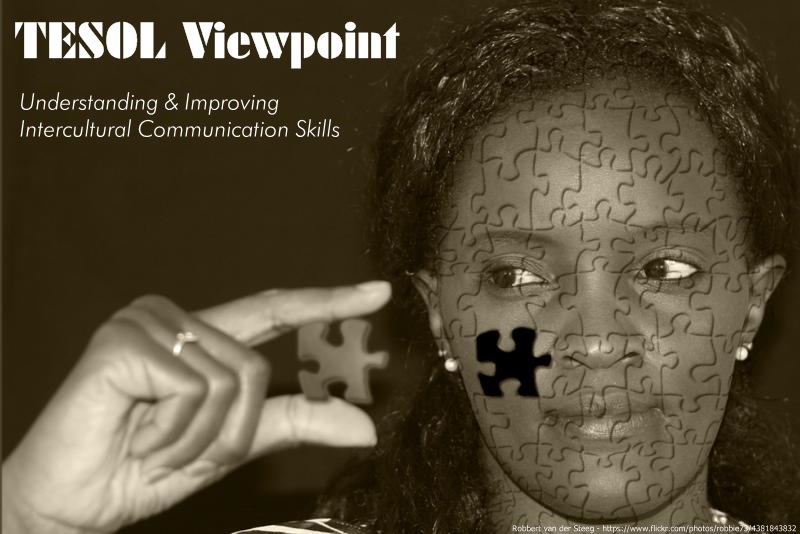Interdependence of people and cultures in the global society of the twenty-first century means all citizens of the world must pay greater attention to intercultural communication and the challenges it brings.
Intercultural communication is the communication between people from different cultures. These groups may be defined by their nationality or by geographical boundaries; by the ethnicity or religion; by their occupation, class status or gender.
Inter-cultural communication research has developed through various disciplines namely the behavioral sciences, anthropology and the language sciences. The term “intercultural communication” became prevalent in TESOL only in the 1980s. Interest in the subject grew in the United States of America as a result of the international competitive needs in Post World War 2 international diplomacy and business. In contrast, in the United Kingdom large scale immigration increased the need to better understand intercultural communication issues.
At the beginning, research in this field concentrated on how to help diplomats interact better in the foreign countries they were posted to. In 1959, Hall “The Silent Language” studied the “out-of-awareness” aspects of communication – the “paralanguage of pitch, rhythm and intonation”, the “silent language” of gestures and movements (kinesics) and the use of time (chronemics).
It is a fascinating field of research and through the subsequent decades more research by psychologists and linguists identified the complexity of intercultural communication. Some examples include Tiandis’ (1995) studies on concepts of individualistic (American or German) versus collectivist (Brazilian or Japanese) cultures.
As early as 1966, Kaplan’s contrastive studies in the writing of ESL learners illustrated the different ways cultures have of expressing themselves, for example Westerners are direct in their approach, whereas Latin-Americans favor a more loop-like style of writing. It is not appropriate however, to make sweeping generalizations.
Intercultural communication has never been as relevant as it is today and will continue to mystify and challenge researchers in the future. The phenomenon of globalization and improvements in communication and transportation technology has dramatically increased intercultural communication encounters in all countries – developed and developing.
There are concerns that increasing globalization will reduce cultural diversity particularly if students are taught to adopt the behaviors of English speakers. As more countries adopt English as their lingua franca there is more concern about what this will mean for other national/regional languages and cultures. Indeed, the concern was great enough for an international conference in Barcelona (1996) to establish a “Universal Declaration of Linguistic Rights”. Recently, “intercultural rights” and “intercultural linguistics” studies (Gomes de Matos 1997) have advocated integrating a human rights philosophy into the research and practice of language teaching.
I believe it is beholden on all TESOL professionals to facilitate better intercultural communication whilst at all times maintaining high levels of cultural diversity, rights and responsibilities. This will create a win-win situation for all.
Misunderstanding in intercultural communication is common and can lead to miscommunication, frustration and ultimately mistrust.
The main causes for misunderstanding are:
1. Language:
Language use and contextual inferences may be different between cultures. As well, intonation, the use of eye contact and even the use of physical space may affect the language spoken.
2. Rights, value s and needs:
Some cultural characteristics are easy to identify example, status, but many rights are assumed, values are implied and needs are unspoken.
3. Assumptions:
We all tend to make assumptions about situations and people based on our own previous experiences. These may even be to the extent of stereotyping or discriminating. We may also misinterpret each others’ motives.
4. The Situation:
If an interaction is entered into with goodwill and patience from both sides effective communication is more likely. Pressure through external circumstances (example, the need to fulfill a contract) or internal needs (example, saving face) as well as emotions may affect the outcome adversely.
All individuals engaging in intercultural communication can take steps to improve the interaction by:
1) Researching the cultures and communication conventions of the people they will be communicating with.
2) Setting a clear agenda so that all parties are aware of the nature and purpose of the interaction.
3) Avoiding the use of slang and idioms.
4) Listening carefully and watching body language for communication signals.
5) Being aware that the use of accenting and intonation can significantly change meaning.
6) Respecting the local communication formalities and styles.
One of the biggest challenges I have as a TESOL professional is to foster excellent levels of intercultural communication in my students, whilst at the same time doing all I can to preserve the wonderful and unique characteristics of their own cultures.
I am seeking to challenge myself and push my boundaries further by asking and attempting to answer the question “How can I teach English more effectively, so that the people of the world can be “empowered” by knowing English?” (Carter and Nunan 2001) It is indeed a powerful question and one to which we all need to pay close attention to in this complex, bewildering and ultimately fascinating world all cultures of the world cohabit.
TESOL Viewpoint brings alumni essays on teaching English as a second language. This viewpoint focuses on intercultural communication.



